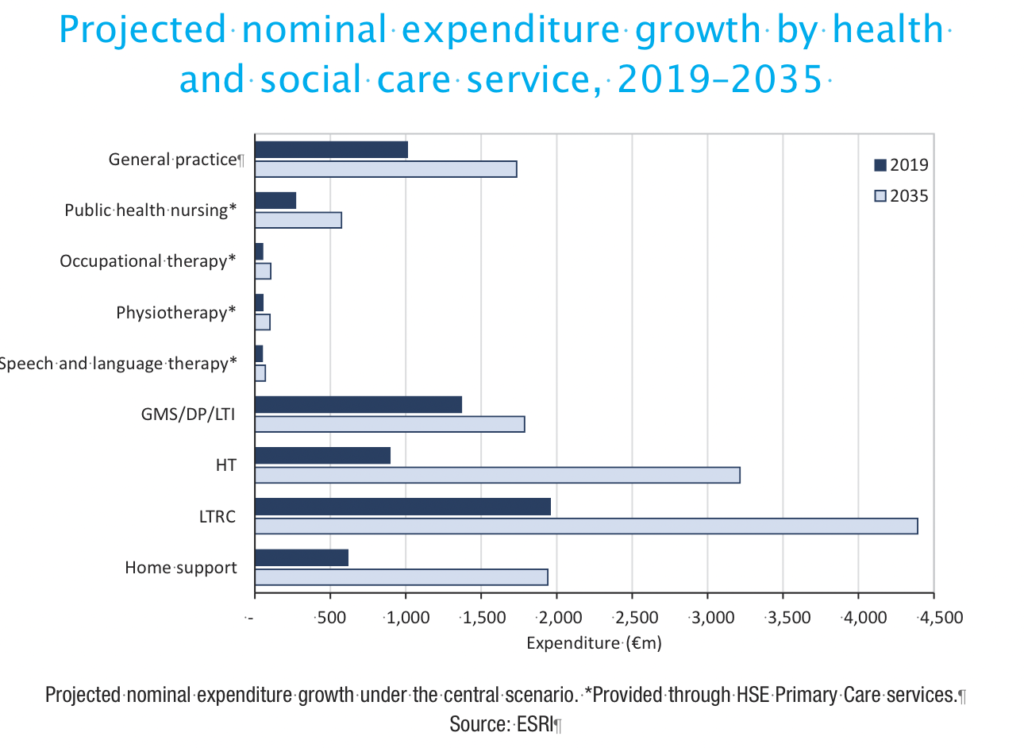Next decade care costs will require billions

The Government will need to substantially increase its expenditure on primary, community, and long-term care by 2035 to meet rising costs and population growth and ageing, an ESRI report has found.
The need for increased expenditure will be largely driven by the cost of delivering care, specifically pay-related costs, the report, which projects expenditure in health and social care from 2019 levels out to 2035, found.

Designed to help inform policymakers on which parts of the health and social care system should be prioritised for investment and where policies should be focused to contain cost pressures, the report suggests that up to €12 billion could be needed to fund primary, community, and long-term health services over the next 14 years.
A range of factors and pressures including population changes, healthy ageing, government policy measures and pays costs will affect the scale of the increase needed, with overall projections ranging between a low of €4.4 billon to a potential high of €12 billion.
Analysing four services, it estimated the largest cost increases will be: public and private GP services and public health nursing and community care; high tech-medicines dispensed in the community; long-term residential care; and home support services. The report’s authors find that “continuing current trends will lead to expenditure growth on high-tech medicines and long-term residential care that far exceeds that of general practice and home support in the medium term”.
The increased cost of providing care is identified as the largest driver of projected expenditure growth of between €1.6 billion and €2 billion in public and private general practice by 2035. The report implies a 2.9 per cent to 4.5 per cent average expenditure increase.
A 6.1 per cent to 10.5 per cent average annual increase in high-tech medicines reflects a continuation of high recent growth in demand and comes at an estimated expenditure increase of between €2.3 billion and €4.4 billion in 2035.
Population ageing is the key driver of projected expenditure increase in public and private long-term residential care of between €3.8 billion and €5.7 billion in 2035. The costs imply a 4.3 to 6.9 per cent average annual expenditure increase.
Finally, the ESRI follows the Sláintecare recommendation that a statutory home support scheme be established and predicts a 4.4 per cent to 10.4 per cent average annual increase requirement to meet a projected public and private home support requirement of between €1.2 billion and €3 billion in 2035.
“Changes in the cost of delivering care, particularly pay-related costs, is the main driver of expenditure growth. In addition, population ageing, and additional modelled demand for high-tech medicines and the assumed introduction of the statutory home support scheme, are key drivers of expenditure growth. Identifying approaches to address the projected increases in the unit cost of care delivery should be an important consideration of policymakers,” the report states.





